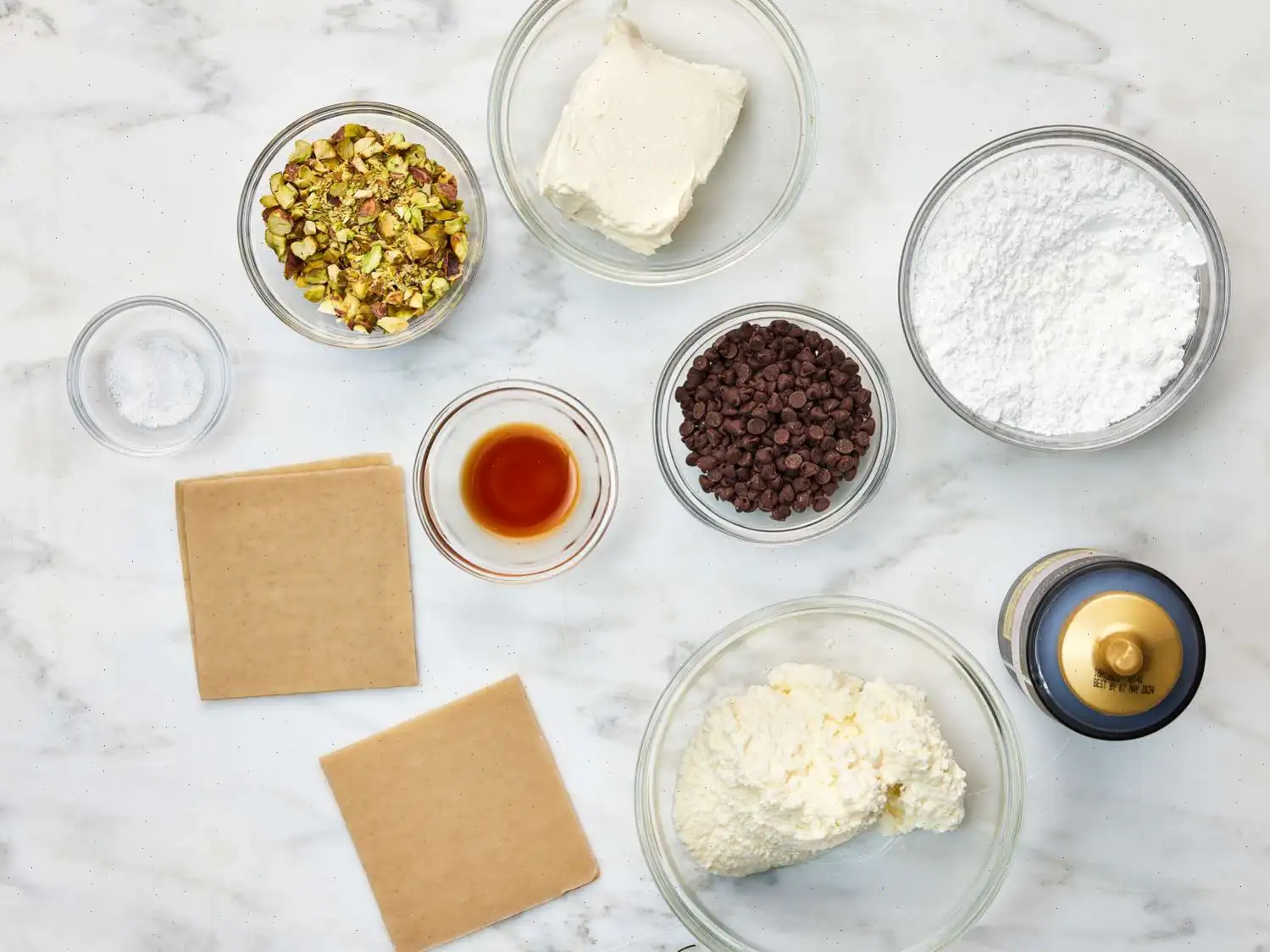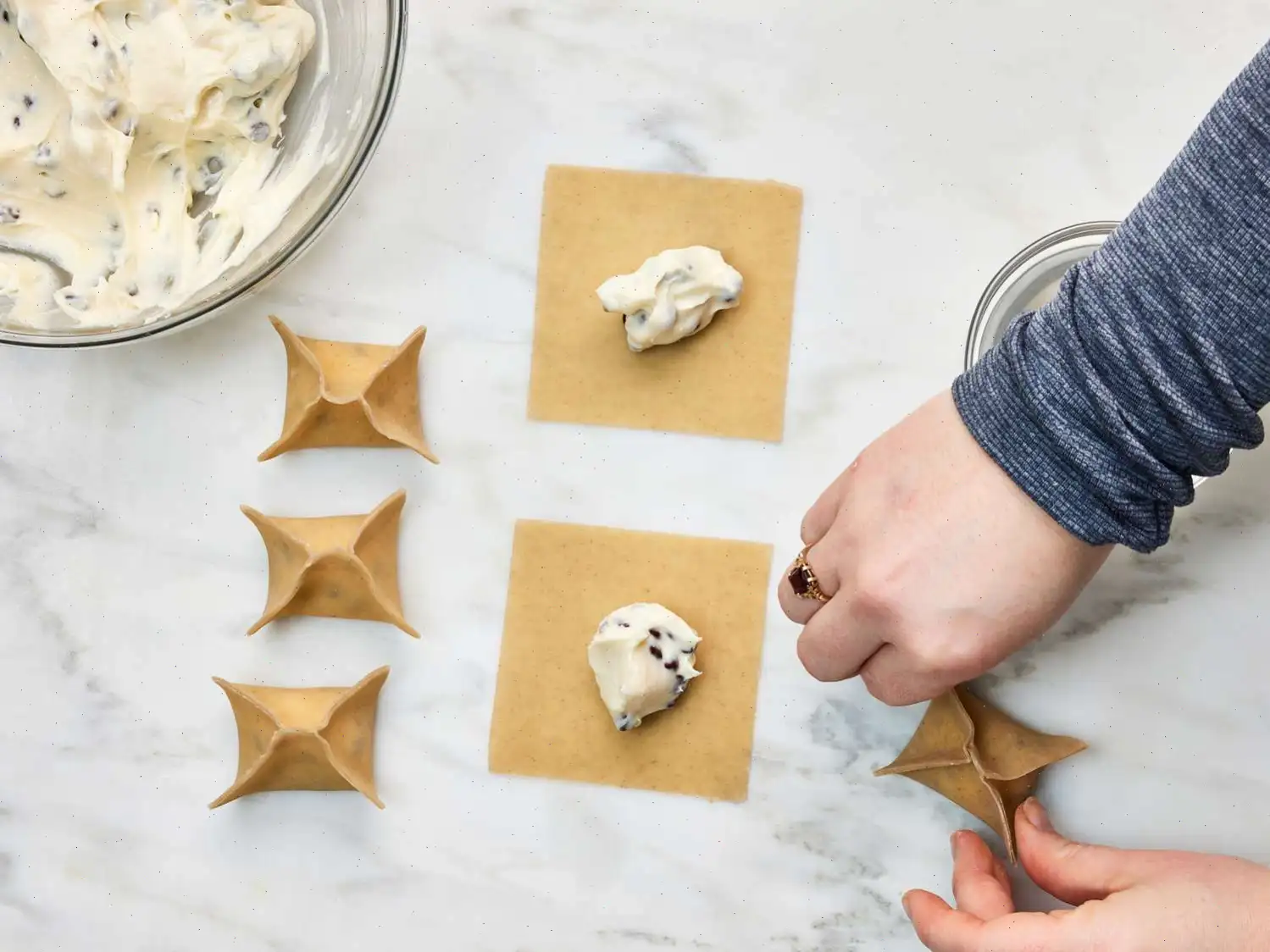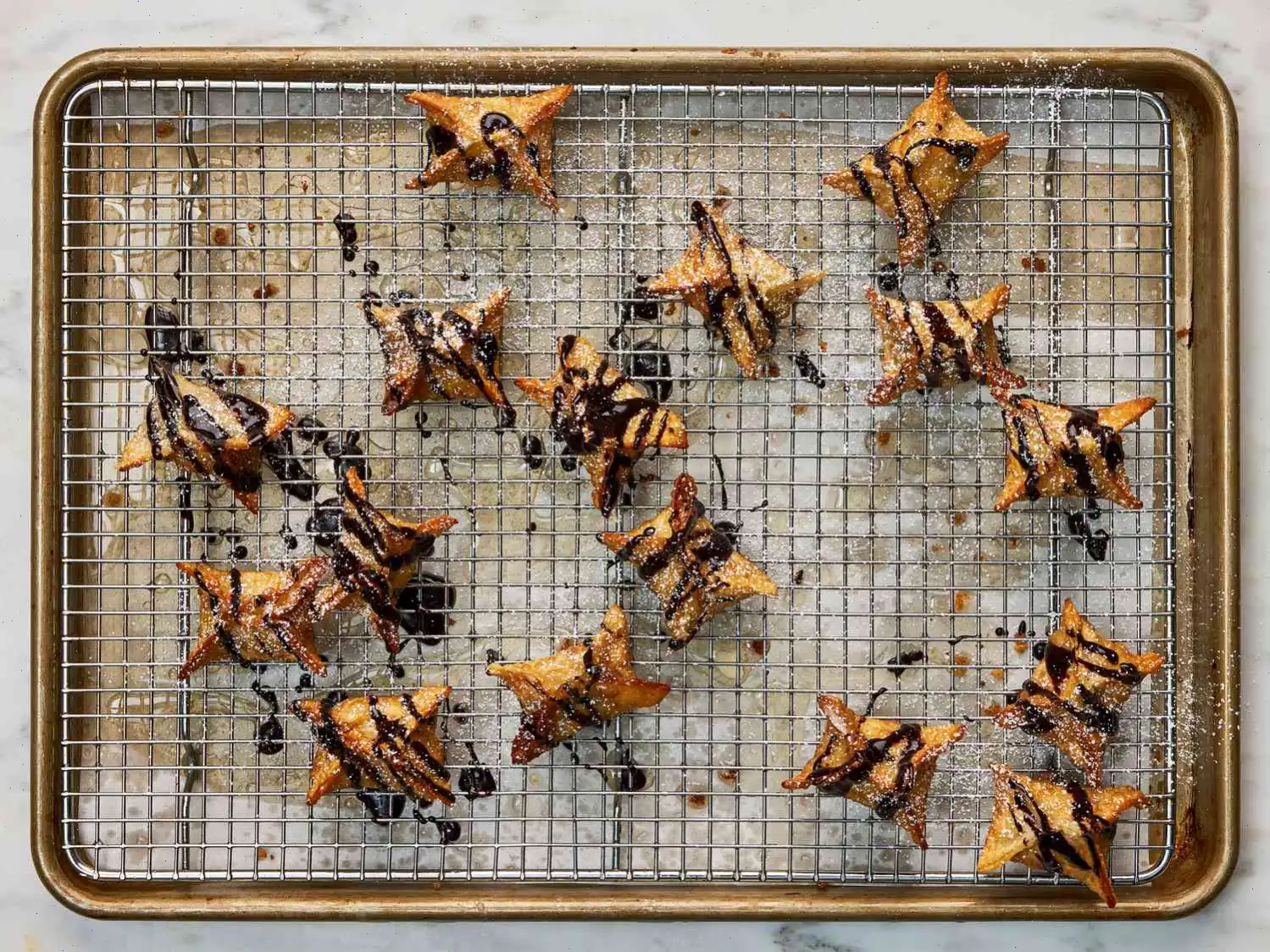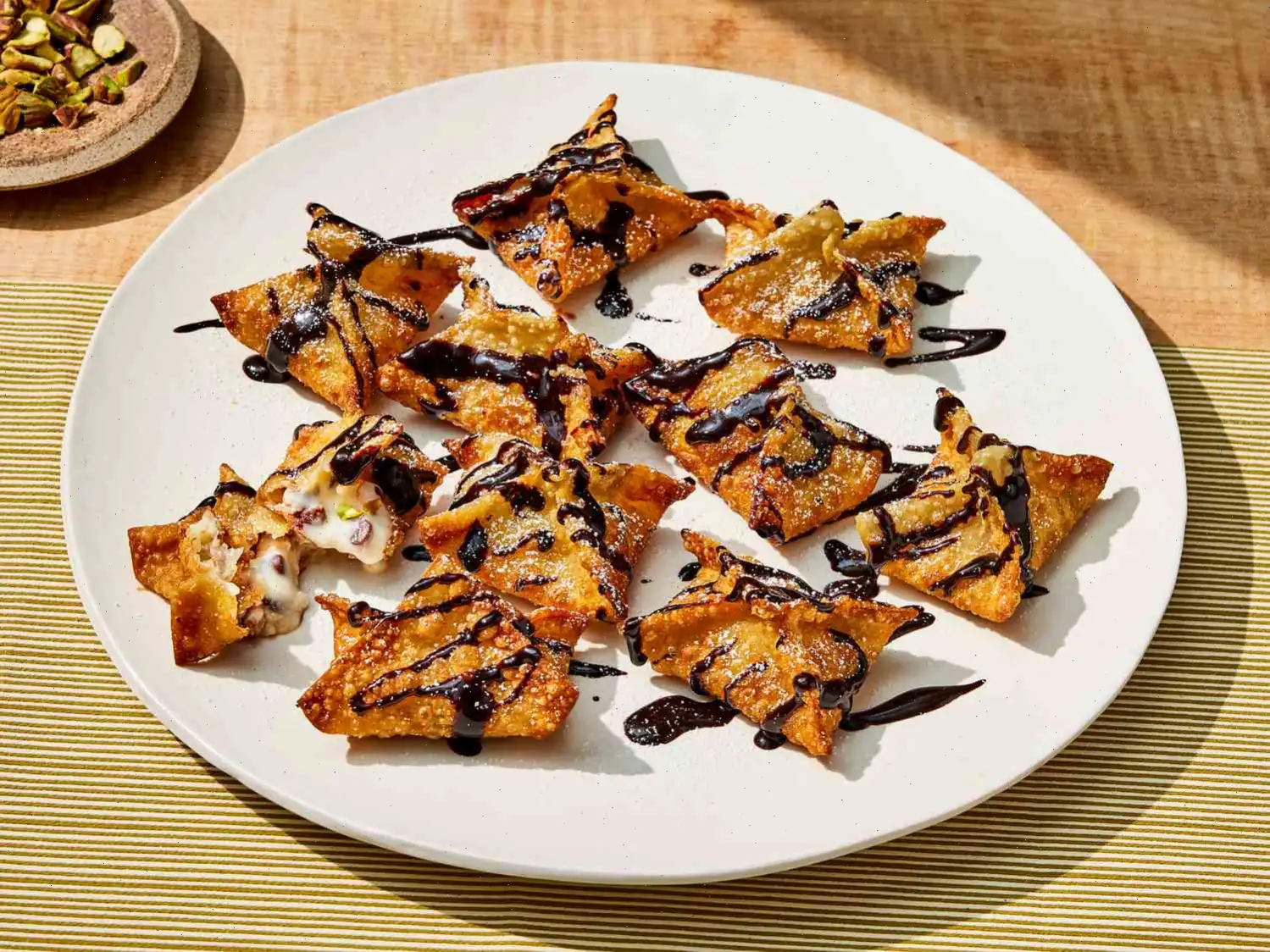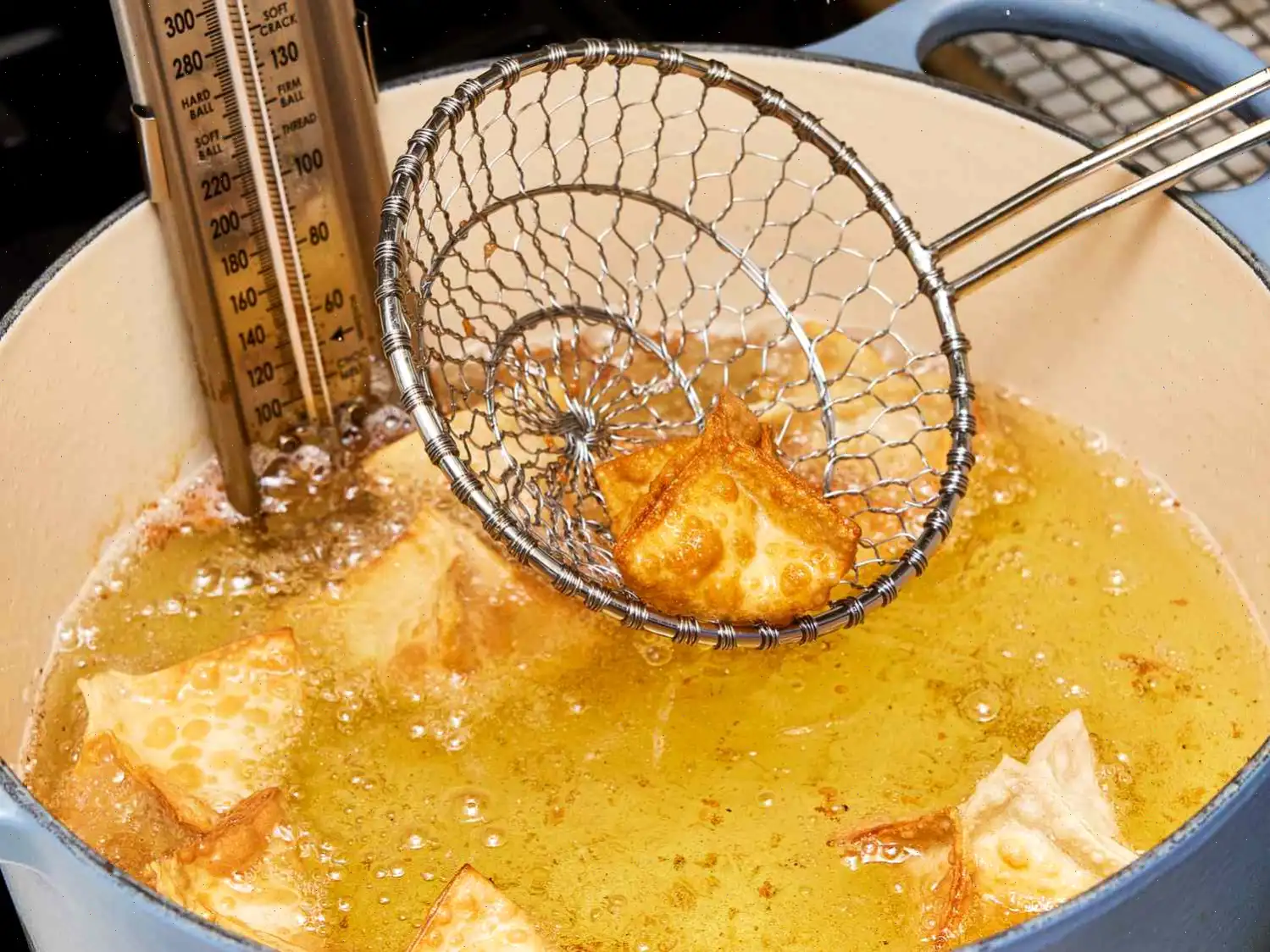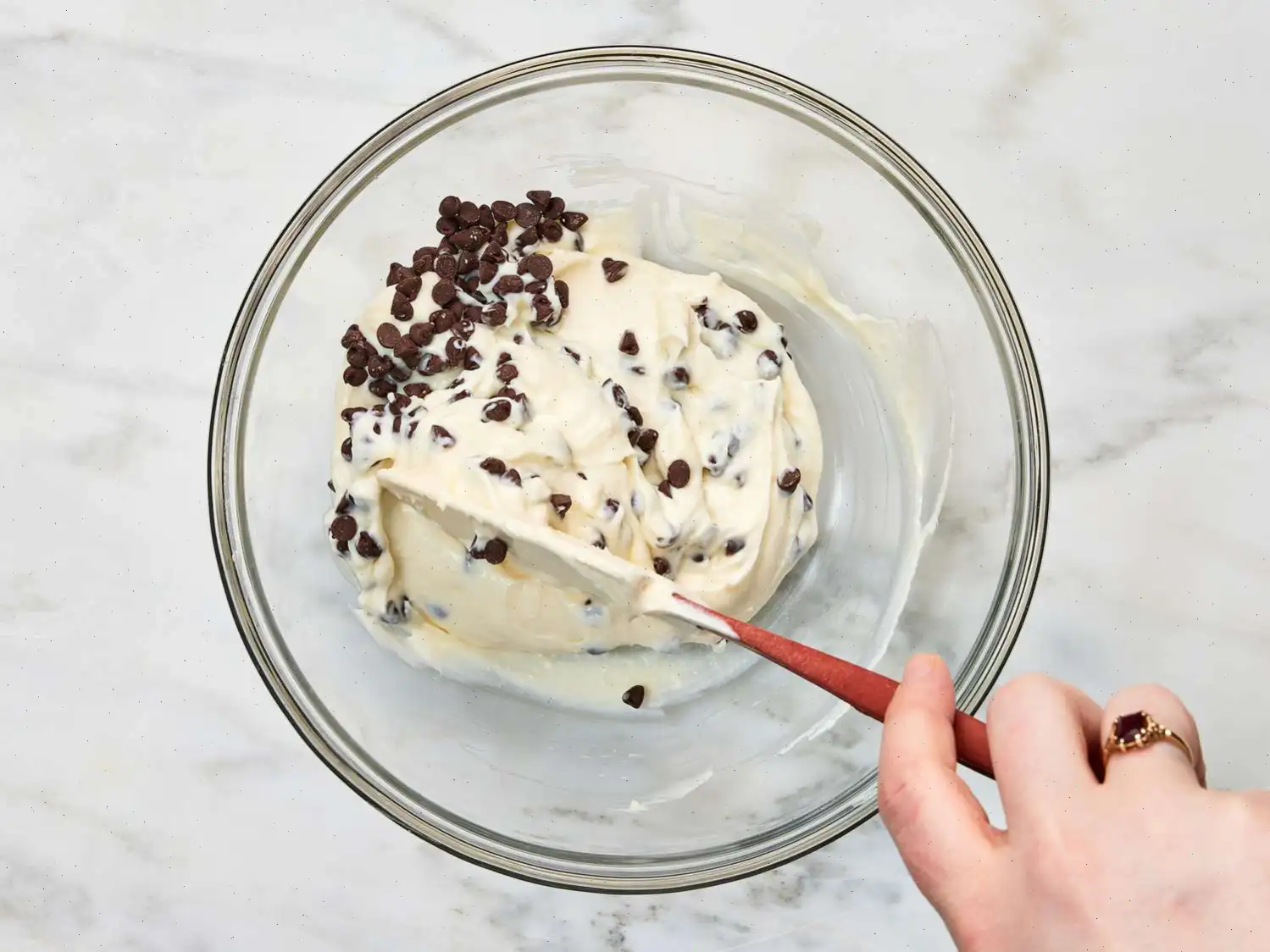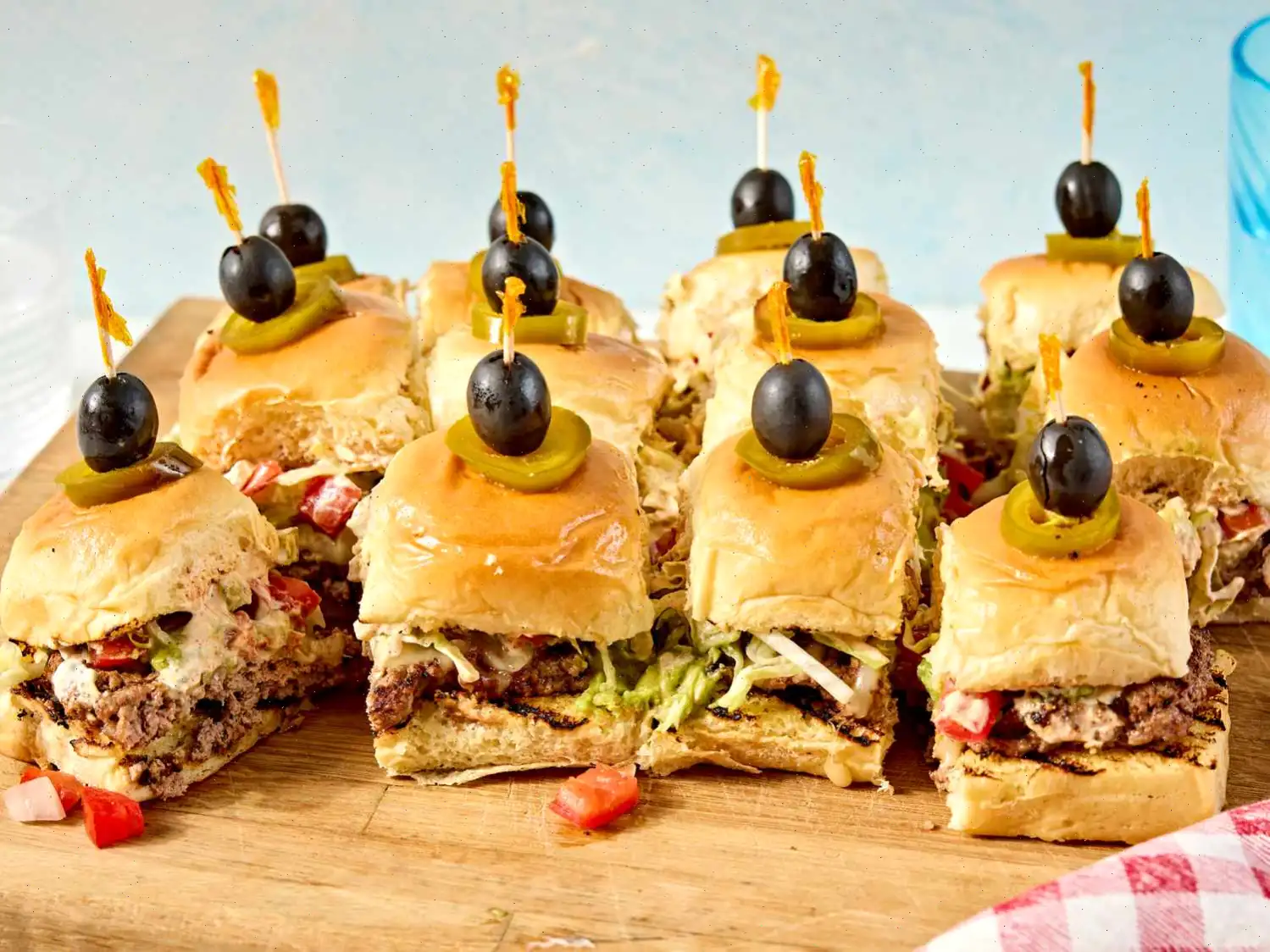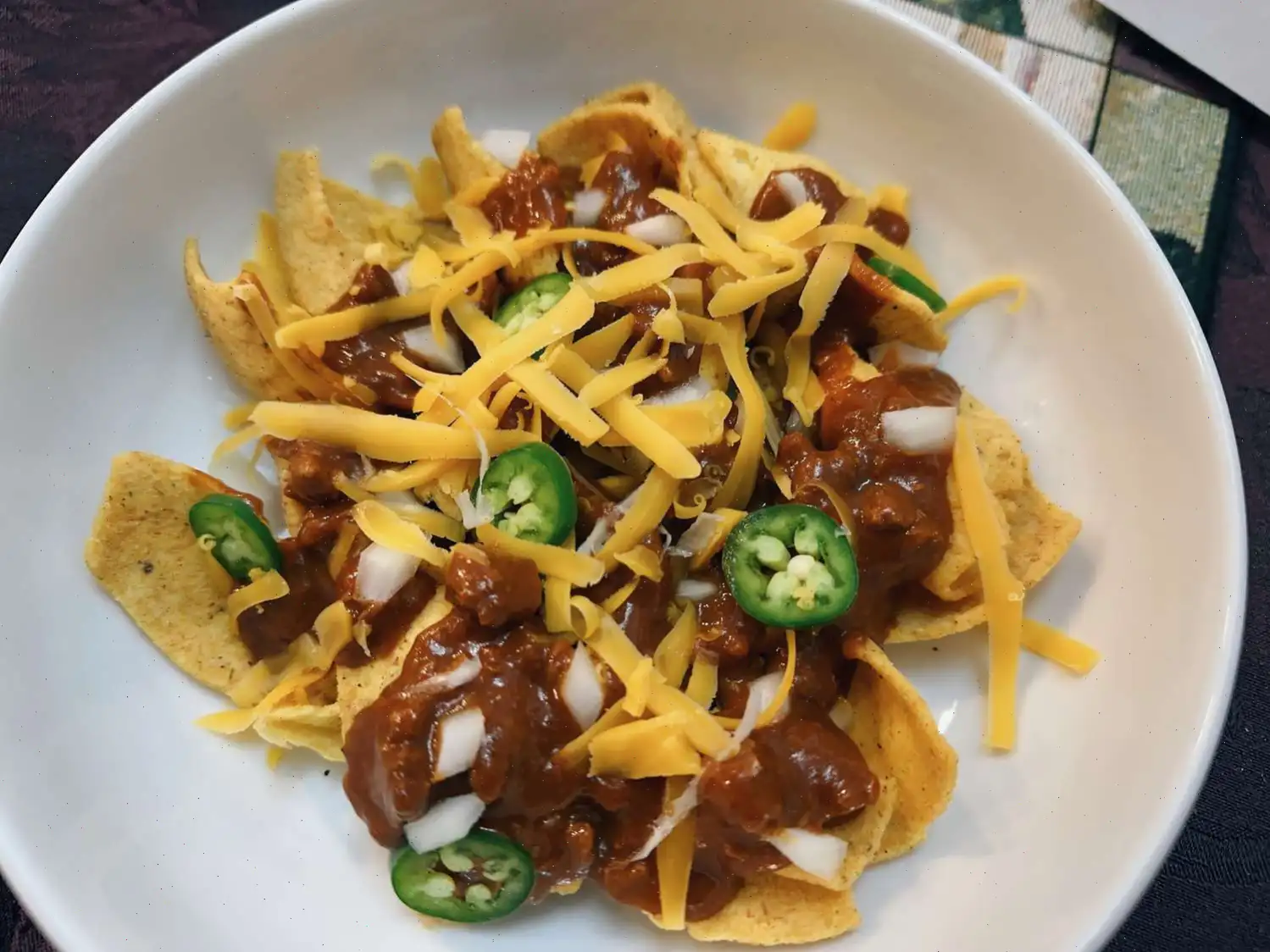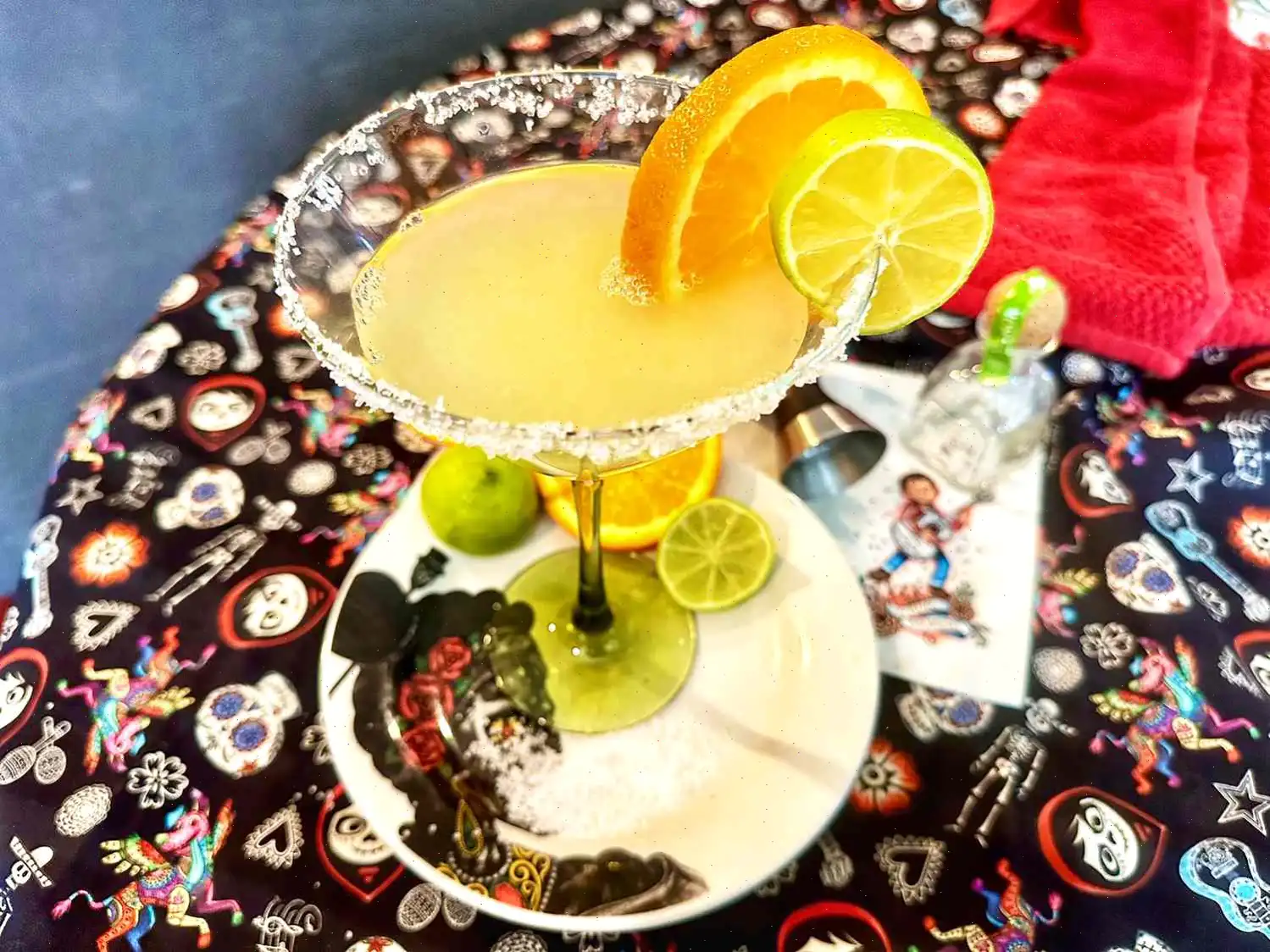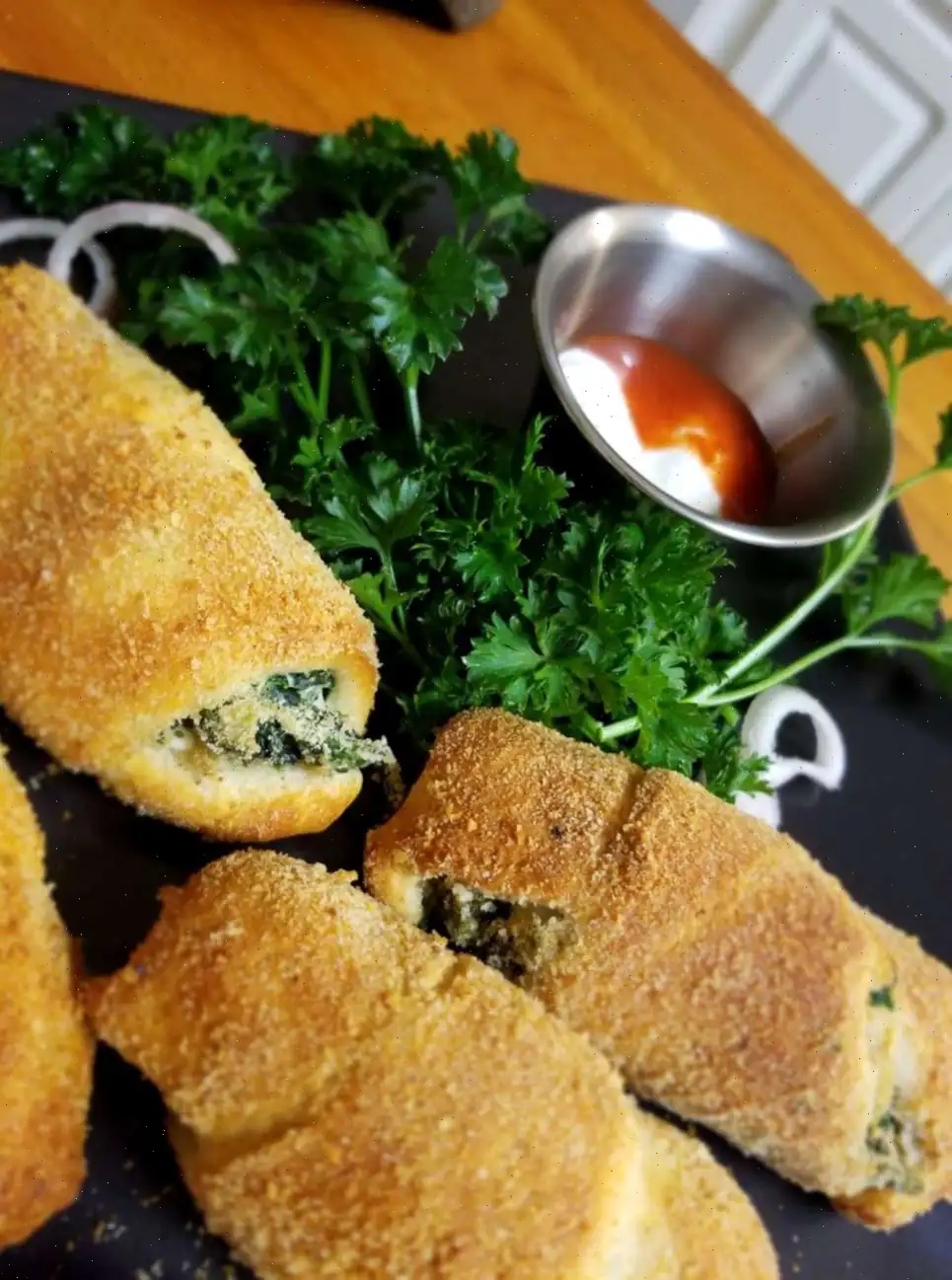
Cannoli Rangoons Recipe
These cannoli rangoons are the ultimate combination of crispy on the outside and creamy on the inside, making them a perfect treat that blends two of our favorite deep-fried dishes. With a bit of creativity, this fun and flavorful twist on the classic cannoli can be customized to suit any taste. Whether you prefer crunchy pistachios or melty chocolate chips, this dessert will be a hit!
Best of all, these cannoli rangoons are easy to make using wonton wrappers instead of traditional dough, resulting in an extra crispy shell. The filling is a rich blend of ricotta, cream cheese, and sweet flavorings, offering a smooth and tangy contrast to the crunchy exterior. Drizzled with chocolate syrup and dusted with powdered sugar, they are the perfect indulgence.
Ingredients:
- 3/4 cup whole-milk ricotta cheese, drained
- 3/4 cup powdered sugar, plus more for dusting
- 1/2 cup cream cheese, at room temperature
- 1 teaspoon vanilla extract
- 1/8 teaspoon kosher salt
- 1/3 cup semisweet miniature chocolate chips or 1/2 cup chopped roasted pistachios
- Canola oil, for frying
- 30 (3-inch x 3-inch) square wonton wrappers
- Chocolate syrup (such as Torani)
Directions:
Step 1: Gather all your ingredients and prepare your work surface.
Step 2: In a food processor, combine the ricotta, powdered sugar, cream cheese, vanilla extract, and kosher salt. Process until smooth and well-combined. Transfer the mixture into a large bowl and gently fold in your choice of either chocolate chips or chopped pistachios. Once mixed, place the bowl in the freezer uncovered for about 20 minutes to allow the filling to firm up.
Step 3: In a large Dutch oven or heavy-bottomed pot, pour in canola oil to a depth of 1.5 inches. Heat the oil over medium-high heat to 360F (180C). While the oil is heating, prepare a small bowl of water for sealing the wonton wrappers.
Step 4: On a clean surface, take a wonton wrapper and spoon about 2 heaping teaspoons of the chilled cream cheese mixture into the center. Using a clean finger, wet all the edges of the wonton wrapper with water.
Step 5: Fold the opposite corners of the wrapper towards each other diagonally, then bring in the other two sides to form a pouch or envelope shape. Gently press the edges to seal, ensuring there are no gaps or openings.
Step 6: Working in batches, fry the rangoons in the hot oil, adjusting the heat as necessary. Fry until golden brown, about 2 minutes, stirring occasionally to ensure all sides cook evenly. Once done, transfer the fried rangoons to a wire rack to drain excess oil.
Step 7: Serve the warm rangoons drizzled with chocolate syrup and dusted with powdered sugar. Enjoy these crispy, creamy treats while theyre still fresh!
Nutrition Facts (per serving):
- Calories: 194
- Total Fat: 9g (12% Daily Value)
- Saturated Fat: 4g (18% Daily Value)
- Cholesterol: 32mg (11% Daily Value)
- Sodium: 315mg (14% Daily Value)
- Total Carbohydrates: 21g (8% Daily Value)
- Dietary Fiber: 1g (3% Daily Value)
- Total Sugars: 8g
- Protein: 7g (15% Daily Value)
- Vitamin C: 1mg (1% Daily Value)
- Calcium: 54mg (4% Daily Value)
- Iron: 1mg (6% Daily Value)
- Potassium: 129mg (3% Daily Value)
Note: Nutritional information is based on available data and may vary depending on the specific ingredients used. For those on medically restrictive diets, consult a healthcare professional before preparing this recipe.
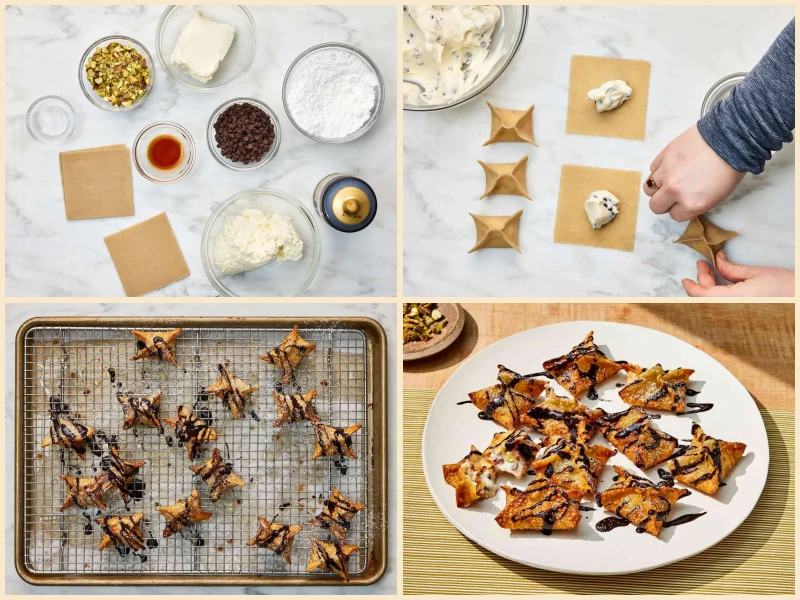
The Story Behind Cannoli Rangoons
Cannoli Rangoons are a modern fusion dessert that bridges Italian and Asian culinary traditions. The concept combines the classic Italian cannoli, a pastry known for its sweet, creamy ricotta filling and crispy tube-shaped shell, with the deep-fried wonton wrapper commonly found in Chinese cuisine. This inventive treat was first popularized in American kitchens in the late 20th century as chefs and home cooks experimented with hybrid desserts that were both visually appealing and easy to prepare. By using wonton wrappers instead of traditional cannoli dough, these rangoons deliver the beloved flavors of cannoli in a quicker, more approachable form.
Regional Variations and Characteristics
While Cannoli Rangoons are mostly associated with American cuisine, different regions have added their own twists. In coastal areas, you might find fillings enhanced with lemon zest or mascarpone to balance the sweetness, while in Midwestern kitchens, chocolate chips or chopped pistachios are more common. The type of oil used for frying can also affect the flavor and texture, with peanut oil offering a slightly nutty aroma and canola oil keeping the focus on the filling. These subtle regional differences highlight the adaptability of the dish while maintaining its signature creamy interior and crispy exterior.
What Sets Them Apart from Similar Dishes
Cannoli Rangoons are distinct from traditional cannoli, which require rolled pastry shells and specialized molds. Unlike standard fried desserts like cream-filled turnovers or egg rolls, rangoons feature a sweet ricotta-cream cheese filling often mixed with chocolate or nuts, creating a flavor profile that is richer and more dessert-oriented. Their compact, pouch-like shape allows for even frying and a perfect balance of filling to shell ratio, which differentiates them from other deep-fried sweets that may be overly doughy or excessively greasy.
Typical Serving Context
These treats are most commonly served as appetizers at parties, buffets, or special occasions, but they also appear in dessert menus at American-Chinese fusion restaurants. Served warm and often drizzled with chocolate syrup or dusted with powdered sugar, Cannoli Rangoons make an elegant addition to any gathering. Their bite-sized format and visually appealing presentation make them ideal for events where guests can enjoy a sweet snack without the need for utensils.
Fun and Interesting Facts
- The use of wonton wrappers drastically reduces preparation time compared to making traditional cannoli shells from scratch.
- Cannoli Rangoons are highly customizable; fillings can include chocolate chips, crushed nuts, or even small fruit pieces for seasonal variations.
- Despite their Italian inspiration, this dish has become a quintessential example of American culinary fusion.
- The first documented recipes appeared in the 1980s in community cookbooks and quickly spread through online recipe sharing in the 2000s.
- They are sometimes referred to as dessert rangoons to differentiate them from savory cream cheese-filled versions popular in Chinese-American cuisine.
You can listen to this recipe in AI audio format. Simply click the play button below to listen to the content in a format that suits you best. It’s a great way to absorb information on the go!


